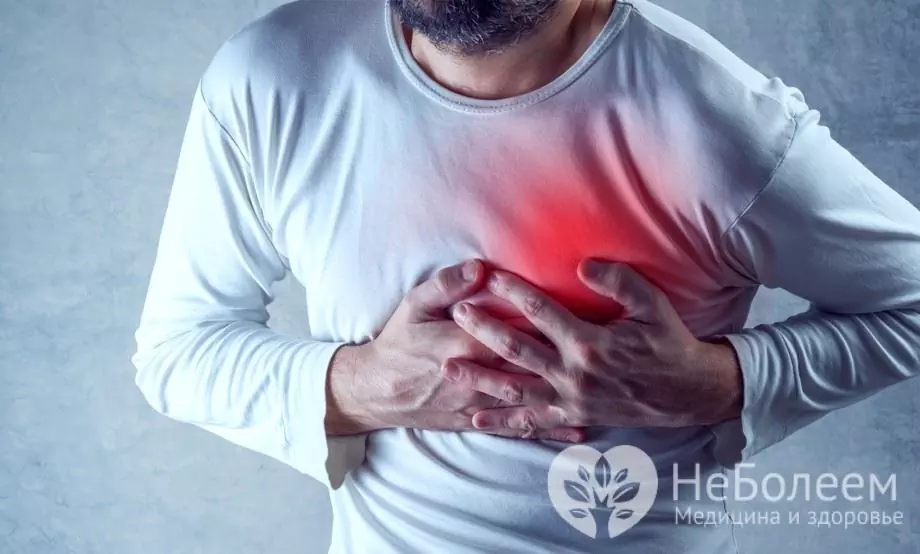Cocaine overdose
Cocaine is a methyl ester of benzoylecgonine and belongs to the tropane alkaloids. This substance has a strong local anesthetic effect, and also has a pronounced stimulating effect on the central nervous system, causing a feeling of euphoria. Previously, cocaine was widely used in medicine as a pain reliever and local anesthetic. But, since the 20th century, it has not been used for medical purposes, since it has a number of serious side effects, and the pharmaceutical industry has developed more advanced drugs.

Source: depositphotos.com
Currently, cocaine is used by people suffering from drug addiction with the aim of achieving drug intoxication. That is why this substance was included by the UN in Schedule I of the Single Convention on Narcotic Drugs and its circulation is strictly controlled by the authorities of all countries of the world.
The use of cocaine quickly leads to the formation of mental dependence. The initial doses that cause feelings of euphoria cease to work, and the addict is forced to increase the dose in order to achieve the desired effect. This causes a cocaine overdose.
How much cocaine is needed for an overdose?
Cocaine is used in many ways:
- rubbing the powder into the gums;
- inhalation;
- smoking;
- injections.
At the very beginning of the intake, a dose of 15-60 mg is used. As habituation develops, it gradually increases. You cannot talk about any specific amount of a substance that causes toxic effects, it is individual and depends on many factors, including age, general health, body weight and hereditary characteristics. In people suffering from diseases of the cardiovascular system or in a state of alcoholic intoxication, even minimal amounts of the drug can cause an overdose.
There is no concept of a standard dose for cocaine, as it is distributed illegally. In the specialized literature, a life-threatening dose is distinguished (leads to death in 50% of cases) and a lethal dose that leads to death in 100% of cases. Experts consider 500 mg of cocaine administered intravenously to be a life-threatening dose; 750-800 mg of cocaine administered intravenously or ingested through smoking leads to death. When taken orally, the lethal dose is 1.2 g.
It should be borne in mind that even when taking high doses of cocaine does not cause acute intoxication, long-term cocaine dependence will inevitably lead to a number of negative clinical effects that can be considered as manifestations of chronic overdose.
Signs of overdose
Signs of acute cocaine overdose are associated with its stimulating effect on the central nervous system. These include:
- increased heart rate;
- increased frequency of respiratory movements;
- increased blood pressure;
- dry mouth, intense thirst;
- cyanosis of the skin and mucous membranes;
- psychomotor agitation, irritability;
- tremor of the limbs;
- confusion of consciousness;
- chills, increased body temperature;
- excessive sweating;
- convulsive seizures.
In some cases, there is a heart attack associated with a spasm of the coronary arteries that feed the heart muscle. Hypoxia causes the development of myocardial infarction, which can lead to the rapid death of the patient. In addition, spasm of the coronary arteries can provoke severe arrhythmias, which can also lead to sudden death.

Source: depositphotos.com
Long-term cocaine use is manifested by the following symptoms:
- memory impairment, decreased concentration;
- increased fatigue;
- sleep disorders;
- hallucinations;
- depressive states, suicidal tendencies;
- obsessions;
- weight loss;
- arrhythmias.
Their development is associated with the negative effect of a toxic substance on the tissues of almost all organs.
First aid for cocaine overdose
- Lay the victim down, provide him with physical and psycho-emotional rest. If the victim is unconscious, you should turn his head to one side and make sure that he remains in this state until the ambulance arrives - this will prevent the tongue from sinking and the aspiration of vomit.
- Provide fresh air by removing or loosening tight clothing, opening a window or vent.
- To reduce high body temperature, put a cold compress on the forehead and change it often, blow the victim with a fan. Antipyretic drugs are ineffective in this situation.
- If breathing and cardiac arrest occurs, they begin basic resuscitation - indirect heart massage and artificial respiration. They should be carried out before the resumption of spontaneous breathing and heartbeat, or before the arrival of an ambulance.
Antidote
There is no specific antidote to cocaine.
When is medical attention needed?
An overdose of cocaine that has occurred requires immediate medical attention. This must be done even in cases where the patient's condition seems stable, since at any time a significant deterioration can occur, up to the cessation of cardiac activity.
Symptomatic treatment:
- to combat hypoxia of organs and tissues - oxygen therapy. With increasing respiratory failure, tracheal intubation is performed, the patient is transferred to artificial ventilation;
- with a sharp decrease in blood pressure caused by water-electrolyte disturbances that occur in response to hyperthermia and profuse sweating - infusion of saline solutions;
- with a significant increase in body temperature - a bath and washing the stomach with cool water, a cleansing enema;
- for the relief of psychomotor agitation - benzodiazepines (Diazepam, Midozalam). If benzodiazepines are ineffective, Propofol or short-acting barbiturates (Nembutal, Amital) are used.
After a decrease in body temperature and restoration of normal circulating blood volume, tachycardia and arterial hypertension usually decrease. If this does not happen, the use of α-blockers (Phentolamine) or direct vasodilators (sodium nitroprusside, nitroglycerin) is indicated.
Possible consequences
The most common consequences of a cocaine overdose are:
- myocardial infarction;
- cerebral stroke;
- acute renal failure;
- toxic hepatitis;
- pneumonia;
- thromboembolism.
In pregnant women, an overdose of cocaine can cause miscarriage or intrauterine fetal death.
YouTube video related to the article:

Elena Minkina Doctor anesthesiologist-resuscitator About the author
Education: graduated from the Tashkent State Medical Institute, specializing in general medicine in 1991. Repeatedly passed refresher courses.
Work experience: anesthesiologist-resuscitator of the city maternity complex, resuscitator of the hemodialysis department.
The information is generalized and provided for informational purposes only. At the first sign of illness, see your doctor. Self-medication is hazardous to health!







